The tribulation and torment of modern-day chores come with a whole lot of negativity but have also paved the way for spirituality and a quest of self, for the current minds. This has, in turn, envisaged the need for the resurrection of ancient ways of life to make things simpler. Yoga has proven to be one such apparatus to facilitate a better quality of life for many. Yoga is a group of physical, mental, and spiritual practices, which are directed towards the relaxation and tranquillity of body and mind. It is a process of promoting the concept of living at the moment, through various body postures called yoga poses and also meditation and thus attaining at least a mental calm and salvation. The yoga poses require balance and concentration, lest being oblivious to all distractions. They mechanize the mind to achieve attention, awareness, and a state of absolute clarity and stability. The entire process of following yoga poses and yogic principles leads one to the journey of enlightenment and self-realization, which in turn provides for total control of one’s emotional and mental quotients. The earliest known meditative techniques, Yoga has been gaining a lot of global attention lately.
What are Anxiety and Anxiety Disorders?

Anxiety can be defined as a state of emotional instability with the feeling of a feeling of worry, nervousness, or unease about a certain situation of the outcome. A feeling of anxiety is created when the brain establishes a preconceived notion of negativity or self-doubt, which might consequently tarnish a well-expected consequence. It is very common for an average human to be anxious. Any event of importance is bound to cause some amount of anxiety. If one has a really eventful life whereby new occurrences keep happening, for instance, someone is in sales and their job depends on it, it is okay to be anxious! It is also okay to be anxious before an important job interview or before exams. However, none of these count for an anxiety disorder.
Anxiety Disorders are said to be a clinical or medical condition in which a person encounters persistent, seemingly uncontrollable, and overwhelming emotions of fear and agitation, which in turn affect the normal functioning of day. It is an overflow of excessive, irrational dread which crept up inside the mind and envelops the cognitive capacity of the brain, which dictates the proper function of the body. Anxiety disorders are real serious medical conditions –just real and serious as physical disorders. They prove to be tumultuous for the mental and emotional sanity of a person. This consequently impacts the overall well being of the person.
People suffering from anxiety disorders have the following symptoms :
· Feeling nervous and restless all the time
· Having a sense of inevitable danger or doom
· Breathing issues
· A high rate of palpitations
· Insomnia and troubled sleep patterns
· Difficulty in containing overwhelming emotions.
Types of Anxiety Disorders:
Though the gamut of anxiety disorders is very subjective and diverse, yet they can be categorized in the following broad types:
1. Generalized Anxiety Disorder (GDA)-
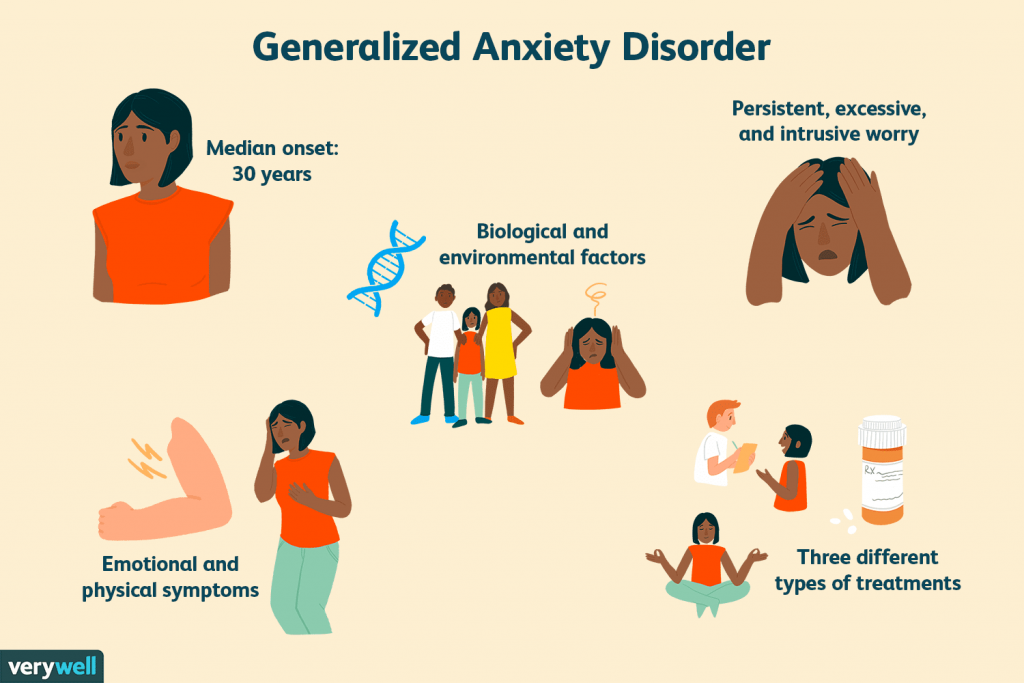
Generalized Anxiety Disorder is a type of emotional restlessness characterized by chronic exaggerated worry and tension in a consistent fashion about several different things, even when there is little or nothing to provoke such thoughts. People suffering from the same may foresee or anticipate doom or disaster and be overly concerned about money, health, family, etc. They always have a sense of catastrophe even when there is no apparent reason for concern.
2. Obsessive-Compulsive-Disorder (OCD)-
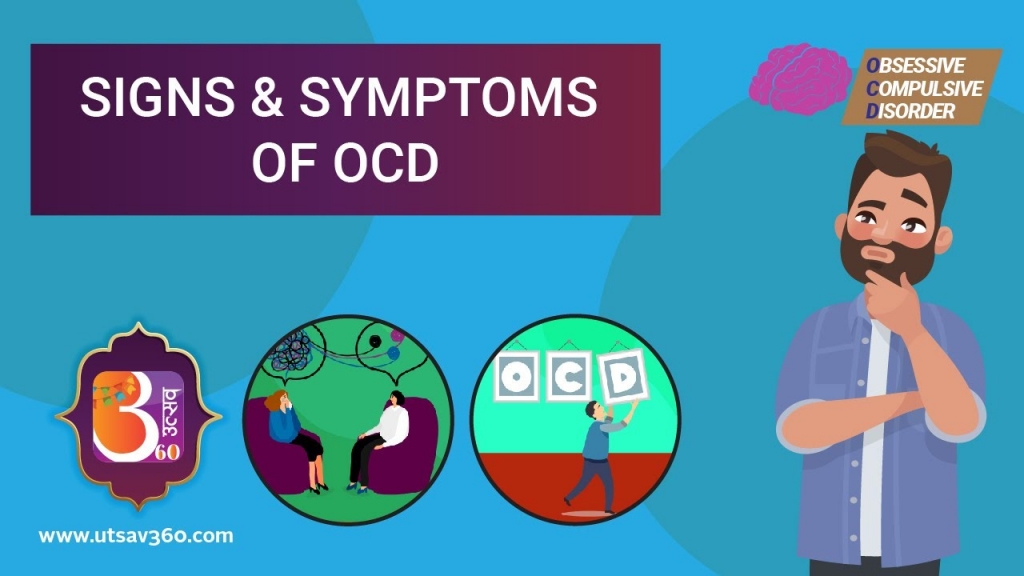
Obsessive-Compulsive Disorder is a kind of mental illness in which the patient encounters recurrent unwanted thoughts and sensations (obsessions), and/ or an uncontrollable urge to do the same thing over and over again (compulsions). Repetitive behaviours in such a manner that it becomes a performing ritual, is a common feature of this disorder. OCD comes in many forms but the basic cases are of four general categories viz checking, contamination, symmetry and order, intrusive thoughts.
3. Panic Disorder
A type of anxiety disorder in which a person witnesses unexpected and repeated episodes of intense fear coupled with physical symptoms such as chest pain loss or breathing, palpitations, dizziness, etc. is said to be Panic Disorder. It usually accounts for overwhelming fear or dread and thereby sends tremors across the body in the form of panic attacks. These attacks produce intense fear that begins suddenly, often with no warning, typically lasting for 10 to 20 minutes.
4. Post Traumatic Stress Disorder (PTSD)-
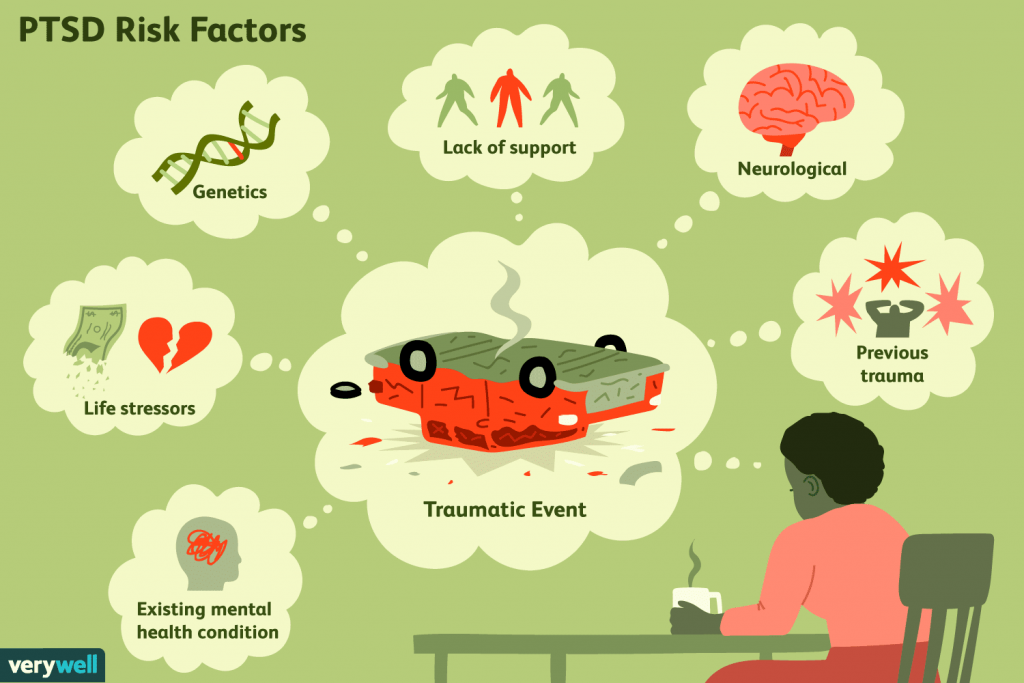
Such type of disorder is said to be developed after encountering a traumatic event or ordeal in the past, which had left an indelible imprint in the mind of the sufferer. The incident may be witnessed in childhood, in the form of mental, physical, or sexual exploitations, that haunt the person each day. Examples of such predicament may be personal assaults, accidents, war, etc, that have rendered the sufferer petrified for good.
5. Social Anxiety-

The most common kind of anxiety disorder is social anxiety. In this phenomenon, a person is caught up with overwhelming anxiety or self-consciousness in everyday social situations. People suffering from the same, tend to have trouble with talking to strangers, public speaking, making eye contact, eating in public, etc.
YOGA FOR INSTANT RELIEF FROM ANXIETY DISORDERS
Yoga and meditation have proven to be impeccably effective in calming down the restless mind and providing a sense of self, to live in the moment, irrespective of any judgments or preconceived notions. Some of the notable Yoga Breathing asanas for helping to mitigate anxiety disorders instantly are as under :
· Stretching or exhaling:
A deep inhalation process may not always be effective to calm the nerves. Taking a deep breath is concerned with the sympathetic nervous system which controls the fight to flight responses in the nervous system. But exhaling is associated with the parasympathetic nervous system, which influences our body’s ability to relax. So this can be useful.
· Equal Breathing (Pranayama):
This ancient practice of breathing is associated with Pranayama Yoga in which the person inhales the same amount of time it exhales. One can practice equal breathing both in a sitting position as well as lying down. This has proven to be effective in mitigating the anxiety disorder issue.
· Yogic Breathing :
The wellness practice of yoga envisages the physical and mental well being of a person. Breathing is an indispensable part of the same discipline. These Asanas promote a sense of calmness and tranquillity in the mind of the practitioner and thus helps to cure anxiety issues.
· Lion’s Breath:
An instant remedy to compulsive thoughts and emotional restlessness can be Lion’s Breath. It is a type of practice in which the person is required to sit in a kneeling position crossing the ankles and bringing the hands to the knees. Then breathing out through the mouth and vocalizing “Ha” every time one exhales.
Yoga Asanas For Anxiety Disorders:
A. Butterfly Pose (Baddha Konasana)

A relatively simple postures that combine the healing powers of meditation, as the pose encourages to enter into a meditative state, which in turn envisages internal retrospection.
B. Extended Triangle Pose (Utthita Trikonasana)
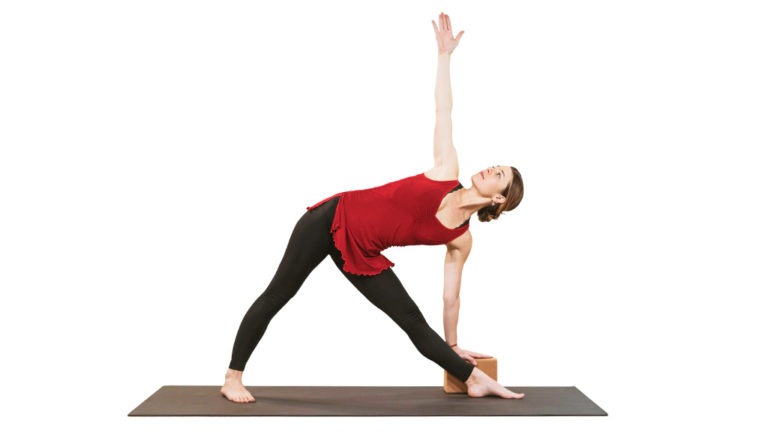
It is a great posture for beginners and is a great way to help alleviate anxiety and depression. By tilting the body equally distributing the energy flow, the body tends to get calmer and more balanced.
C. Half Moon Pose( Ardha Chandrasana)
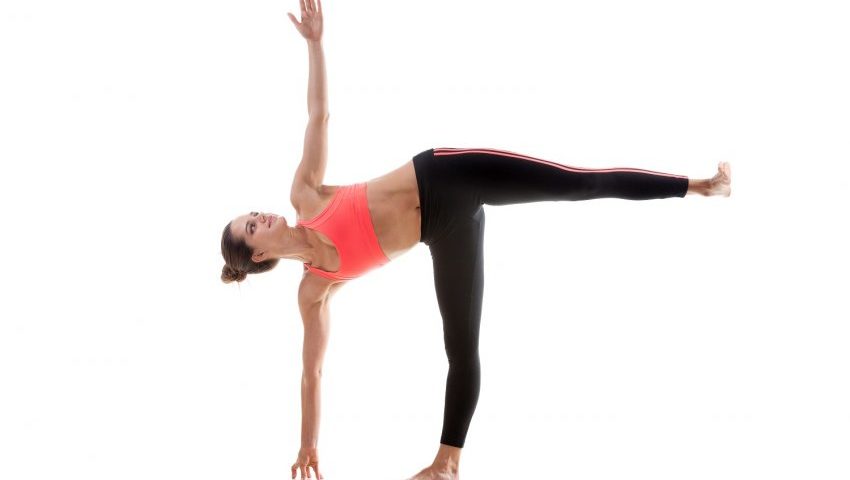
The moon has a rich symbolic significance in yoga mythology, which is considered as an embodiment of serenity and calmness. Ardha Chandrasana has proven to be effective in cooling down the distressed and unstable mind, bringing in a sense of rejuvenation and energy. It exhibits calm and soothing energies which help in improving Coordination and sense of balance. It opens up the body, encouraging better posture and improved self-esteem.
D. Legs-up-the-wall-pose (Viparita Karani):
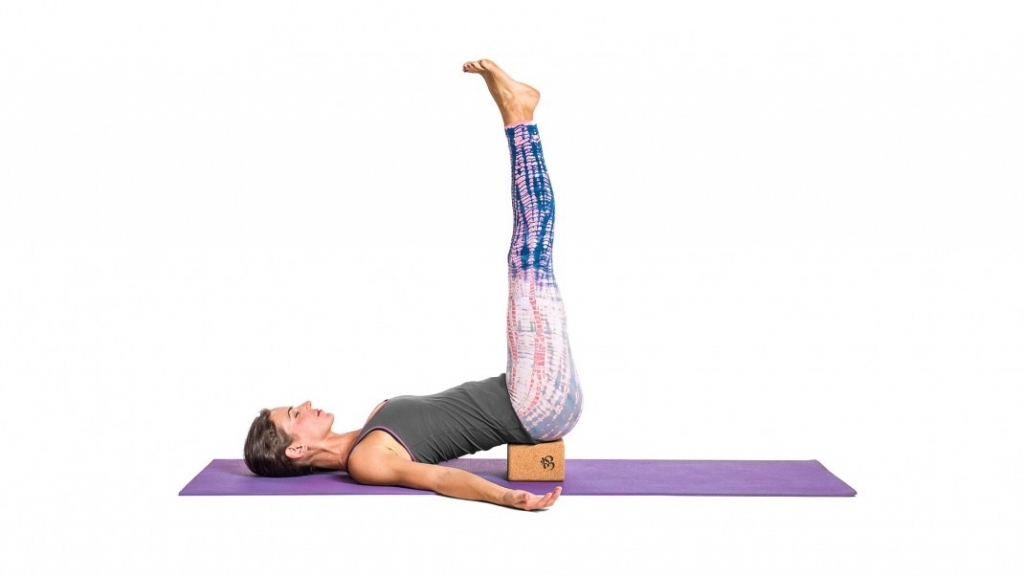
This Yoga Asana calms a busy mind and brings in a sense of peace and tranquillity in the body. as powerful as this pose. It has two different types of viz,
1. Classic–up-the-wall-pose: calms the anxious mind in a stressful day by making it an ideal pose for anxious people.
2. Legs up the wall with bolster pose: demands for a completely relaxed lower back and is supported by a booster. It is said that 20 mins of this affect the nervous system the same as a nap.
E. Halasana Pose( Plow Pose)
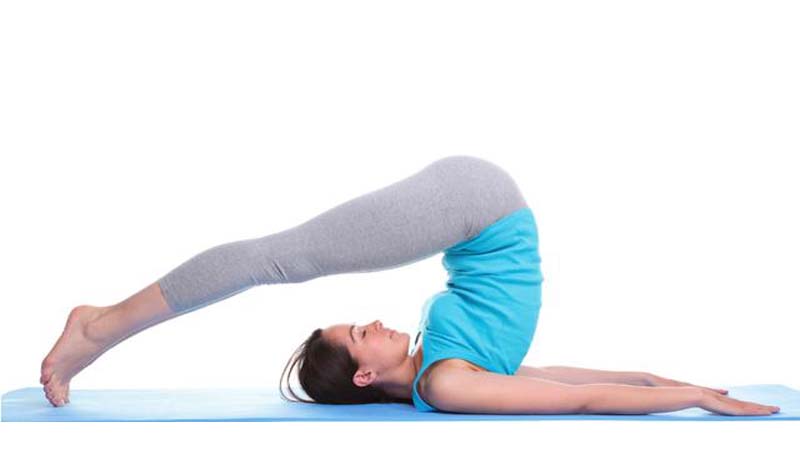
This Asana has proven to be very effective to calm the nervous system reducing stress & fatigue and thus helping in relieving stress and relaxation of mind. It is also said to stimulate the thyroid gland improving mood & energy levels. It is highly recommendable for people who are suffering from the symptoms of depression and anxiety.
Conclusion:
The challenging dynamics of the modern world have proven to be tormenting for people to cope up and thereby leading to anxiety and stress. A generous serving to physical and mental anxiety has become the new normal of today. YOGA has proven to be the greatest stress-buster of all. It helps to reduce hormonal cortisol (stress hormones) which are detrimental to sleep cycles and blood pressure. So grab your yoga mats and get started.



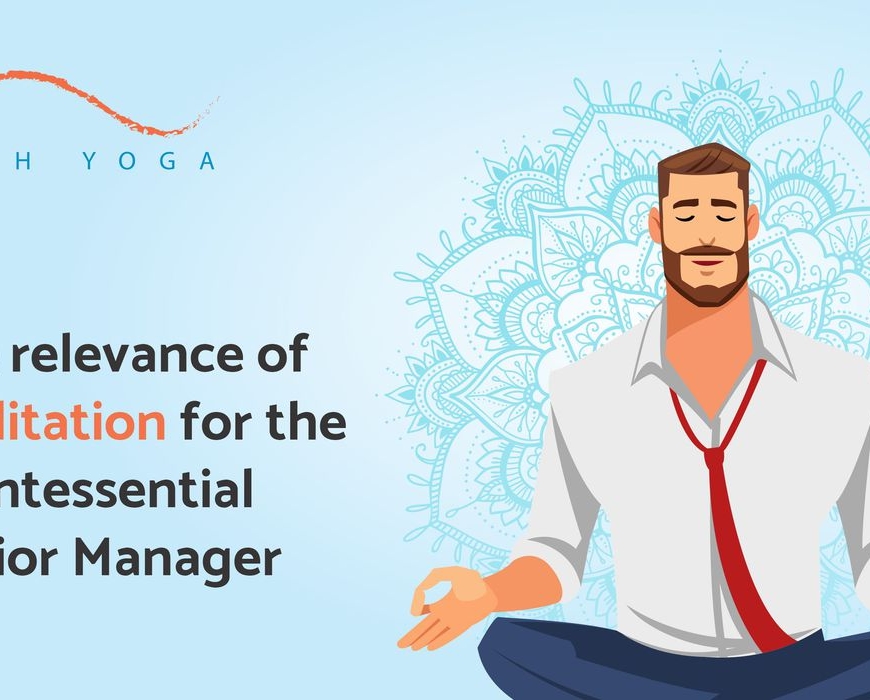

Add Comment